Kristopher W. Kersey’s research focuses on the intersecting histories of Japanese art, design, and aesthetics. His first book Facing Images: Medieval Japanese Art and the Problem of Modernity (Penn State University Press, 2024) models a new paradigm for the study of art history, one that moves beyond reductive West/rest and modern/pre-modern frameworks. The book was awarded the 2025 Monica H. Green Prize for Distinguished Medieval Research from the Medieval Academy of America.
He is currently at work on two monographs. The first, “Art as Metabolism: Fragmentation, Decay, and Assemblage,” discusses the nature of creativity, cultural heritage, sustainability, and archival survival; the second, “The Lens of Language and the Diversity of Sight,” interrogates image theory, linguistic imperialism, and the ways in which language inflects trans-cultural aesthetic experience. Shorter essays address an array of topics: the encounter with Europe ca. 1600 CE, the trope of impermanence, death and Buddhist manuscript culture, theory and historiography, and the archival anxieties in the Anthropocene.
In the summer term of 2025, he will serve as Ishibashi Visiting Professor at the Institute of East Asian Art History at Heidelberg University. He is also currently a member of Afro–Eurasian Origins of Print: A Material, Social, and Theoretical History (a travel seminar organized by the Clark Art Institute).
His work has been supported by a variety of fellowships and grants: a Senior Research Fellowship at the Käte Hamburger Kolleg: InHerit: Heritage in Transformation, an Andrew W. Mellon Fellowship at the Center for Advanced Study in the Visual Arts (CASVA), a Getty Scholar fellowship at the Getty Research Institute, an Anne van Biema Fellowship at the National Museum of Asian Art, and a postdoctoral fellowship from the European Research Council (with Global Horizons in Pre-Modern Art at the University of Bern).
In 2023–24, he held the William Andrews Clark Professorship at the UCLA Clark Memorial Library, where he organized the core program Open Edo: Diverse, Ecological, and Global Perspectives on Japanese Art, 1603–1868. The program entailed three conferences, which respectively addressed intercultural exchange in early modern Japan, environmental and eco-critical art history, and Ryukyuan and Ainu art. An edited volume is underway.
He is a member of the First-Generation Faculty Initiative and is on the advisory boards for the CMRS Center for Early Global Studies, the Center for 17th-and-18th-Century Studies, and the Center for Buddhist Studies. He is also an affiliated faculty member with Global Antiquity.
Prospective Graduate Students:
I am open to advising innovative and dynamic doctoral students working in all periods (ancient to contemporary) of Japanese art history, very broadly conceived. If interested in the program, feel free to email me directly.
Appointments:
Director of Financial Aid, Art History (2023-2025)
Interim Associate Director, Terasaki Center for Japanese Studies (2024-2025)
Education
Ph.D. History of Art, University of California, Berkeley
A.B. Comparative Literature, Princeton University
Books
-

- Facing Images
- Medieval Japanese Art and the Problem of Modernity
- Penn State University Press, 2024
Courses
Seminars
- Design in Modern Japan (graduate)
- Alterity, Media, and Ecology in Japanese Art, 1603–1868 (graduate)
- Modern Graphic Japan: Print and Photography, 1910–1945 (graduate)
- Time and Narrative (graduate)
- Fragmentation, Reuse, and Decay in the Arts of Japan, 1100–1650 (graduate, CMRS research seminar)
- Tea and Japan: Art, Environment, and Material Culture (Fiat Lux First-Year Seminar)
- Emaki: The Story and the Scroll in the Arts of Japan (undergraduate)
- Art Historical Theories and Methodologies (undergraduate)
Recurring Lectures
- Modern and Contemporary Art in Japan, ca. 1850–present
- Graphic Arts of Japan
- The Arts of Japan (GE)
Recent Publications
- “Specimens in Hand: Natural History and tekagami in Early Modern Japan,” Representations (forthcoming 2025).
- Facing Images: Medieval Japanese Art and the Problem of Modernity. Penn State University Press, 2024. (Awards: Monica H. Green Prize for Distinguished Medieval Research, Medieval Academy of America; Millard Meiss Publication Grant, College Art Association)
- “The ‘Renaissance,’ the Revenant: A Hauntology of Art History,” in Stephen Campbell and Stephanie Porras, eds., The Routledge Companion to Global Renaissance Art. London: Routledge, 2024.
- “The Early Modern Fold: Pleated Media in Japan’s Encounter with Europe,” in Making Worlds: Global Invention in the Early Modern Period, edited by Bronwen Wilson and Angela Vanhaelen, 25–57. Toronto: University of Toronto Press, 2022.
- “Impermanence, Futurity, and Loss in Twelfth-Century Japan,” in Destroyed – Disappeared – Lost – Never Were, edited by Beate Fricke and Aden Kumler, 87–99. University Park: The Pennsylvania State University Press, 2022.
- “The Classical as Critique in Japanese Art History.” In 造形のポエティカ:日本美術史を巡る新たな地平 The Poetics of Form: New Horizons in Japanese Art History, 1005–1027. Tokyo: Seikansha, 2021.
- “The Afterlife of the Western Canon: Archive and Eschatology in Contemporary Japan.” The Art Bulletin 102, no. 4 (December 2020): 121–145.
- “The Mediation of Death and the Temporality of the Scroll (Japan, c.1200 CE).” In The Continuous Page: Scrolls and Scrolling from Papyrus to Hypertext, edited by Jack Hartnell, 123–139. London: Courtauld Books Online, 2020.
- “Dynamism, Liquidity, and Crystallization in the Discourse of Japanese Art History.” In Einfluss, Strömung, Quelle: Aquatische Metaphern der Kunstgeschichte, edited by Ulrich Pfisterer and Christine Tauber, 287–310. Image 138. Bielefeld: Transcript Verlag, 2018.
